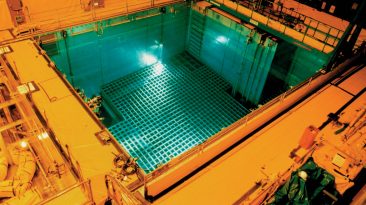Let’s be honest, we are pushing our planet to a climate change catastrophe. But there could be a solution.
71% of the Earth’s surface is covered with water. Why don’t we make use of all that underwater real estate?
What would it be like to live at the bottom of the ocean? Where would we get oxygen to breathe and food to eat? And what would we do in case of an emergency evacuation?
Did you know this map of the ocean floor isn’t quite accurate? Oceans may cover the majority of the Earth’s surface, but so far we’ve only explored 3% of the seabed.
We’d have some homework to do before we could move forward with an expansion plan for humanity. Bringing humanity undersea is something huge corporations might be interested in investing in.
You wouldn’t live in Underwater New-York, but rather in Microsoft Laketown, Amazon Atlantis or Toyota Sea City. If underwater living was the way to go, how would it look?
There is one thing standing between us and underwater living – our bodies aren’t adapted to it. If you dove 150 meters (492 feet) underwater without proper training or equipment, your lungs would shrivel to the size of a pop can and your veins would collapse. Descending all the way to the bottom of the ocean would feel as if you were being crushed under 14 full cement trucks.
But that doesn’t mean our dreams of underwater living can never come true. It just means we’d need to dream smaller.
Our underwater habitats would be rather small – populated with a few thousand good swimmers at most. We’d live in small modules made of steel, glass and cement designed for underwater use. Instead of going too deep into the ocean, we’d settle about 100 meters (328 feet) undersea.
We’d need to build life support systems that would maintain air composition, temperature and humidity. Keeping a livable amount of oxygen in the air would be our major concern.
If we wanted to make our habitat self-sustaining, we’d need to figure out how to grow plants that would produce their own oxygen. How would we go about powering up our Oceanville? With land-based solar panels that would transmit energy to the habitat. We could also use wave power – the undersea equivalent of wind turbines.
Then, there’s food. We’d rely heavily on dehydrated and canned supplies. But don’t forget about good ol’ fishing. With so many foods swimming in front of you, why not take advantage of the fresh sea market?
Our drinking water would be supplied through distillation or condensation. And all our waste would be most likely flushed out into the ocean.
Underwater living isn’t without its dangers, though. Imagine a worst-case scenario. Your bedroom window gets a massive crack and water rampages through your living space. Or your life support system fails, leaving you to suffocate undersea.
In order to stay safe, we’d need to perform regular evacuation drills and make sure our emergency alert systems were up and running at all times. You’d be wise to keep an oxygen tank on hand and have a small submarine ready to shuttle you to safety.
The cool thing about all this is that we already have the technology to make it work. Although, so far, the longest an individual has managed to live underwater is 31 days, there are companies out there planning on building an underwater city like this.
Whether it’s safe enough is another question. Maybe building cities floating in the air would turn out to be a more feasible option.
Subscribe to What-If on Youtube or follow the show on Facebook Watch.
Sources
- “Can Humans Live Underwater? » Science ABC”. Patil, Vaishnavi, and More author. 2015. Science ABC. Accessed May 3 2019.
- “Will We Ever… Live In Underwater Cities?”. Nuwer, Rachel. 2019. bbc.com. Accessed May 3 2019.
- “Could Humans Live In Underwater Cities?”. Earth, Planet. 2018. BBC Science Focus Magazine. Accessed May 3 2019.
- “Plans For A Futuristic, Atlantis-Style Underwater City Unveiled”. 2019. Iflscience. Accessed May 3 2019.



























